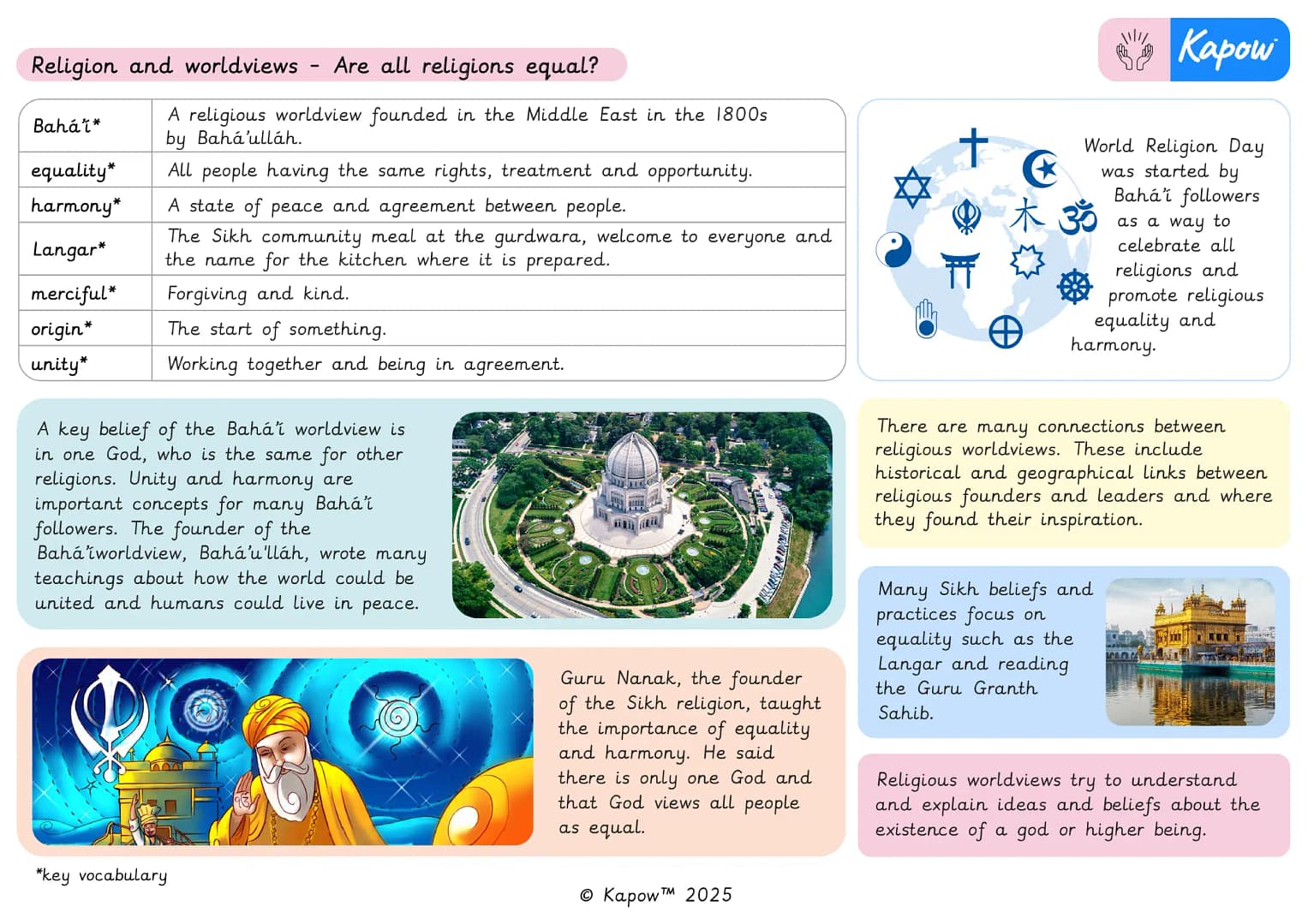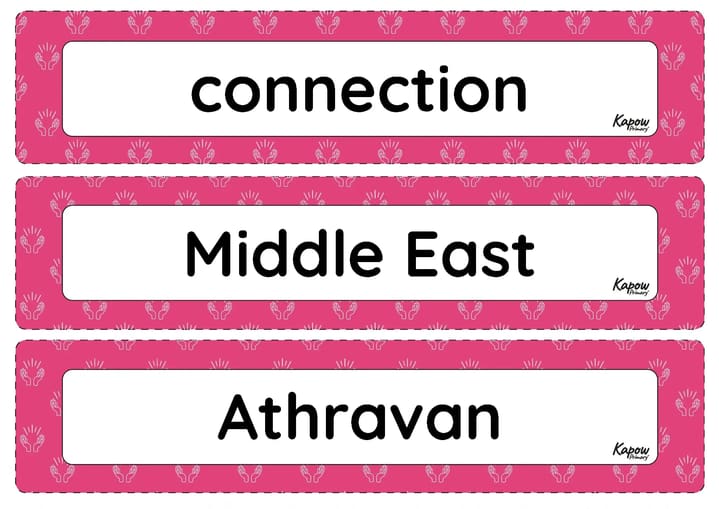Y3/4 (B): Are all religions equal?
Exploring the origins of various religions, children discover geographical and historical connections among them.
The Curriculum and Assessment Review final report has been released. We’re reviewing the recommendations and planning for future updates. Learn more
- Subjects >
- Religion and worldviews >
- Mixed-age >
-
Y3/4 (B): Are all religions equal?
Unit outcomes
Pupils who are secure will be able to:
- Use statements and prior knowledge to identify connections between religions, explaining these connections by referring to people, places and beliefs.
- Talk about why making connections can be helpful.
- Explain similarities and differences between the ways people from different worldviews understand God.
- Use scripture to find out what people might believe.
- Explain why equality and harmony are important to many Sikhs.
- Use a range of sources to find out what might be important to some people from the Bahá’í faith.
- Compare what people with different worldviews may think about other religions.
- Express ideas creatively about how and why World Religion Day is important.
Due to the conflict in Israel and Palestine, extra care should be taken when teaching this unit, especially with regard to any children who may have connections with Israel, Palestine or the broader region.
If you are aware of any particular issues a child has, you might want to discuss the unit with the child beforehand and adapt it to accommodate them. Consider having an adult work with them for additional support. If issues arise during the lesson, it would be advisable to refer to your Senior Leadership Team.
Suggested prior learning
Year 3/4 (B): Where do our morals come from?
Get startedLessons
Y3/4 (B): Lesson 1: How are different religious worldviews connected?
- To recognise that there are many connections between religious worldviews.
Y3/4 (B): Lesson 2: Is there more than one way to understand God?
- To explain similarities and differences in how people understand God.
Y3/4 (B): Lesson 3: Why is religious harmony important?
- To identify how some Sikh beliefs and practices reflect ideas about religious equality.
Y3/4 (B): Lesson 4: How can people from different worldviews live in harmony?
- To determine how Bahá’í teachings influence some practices.
Y3/4 (B): Lesson 5: How and why should we celebrate religious equality?
- To express ideas about religious equality and harmony.
Y3/4 (B): Lesson 6: How can we live together in harmony when we have different worldviews?
- To reflect on and express personal ideas about religious equality, respect and belonging.
Key skills
Key knowledge
Related content
Unit resources

Knowledge organiser – R&W Y3/4 (B): Are all religions equal?
Aimed at pupils, a double page document that gives key facts and definitions from the 'Are all religions equal?' unit.

Vocabulary display – R&W Y3/4 (B): Are all religions equal?
A display version of the vocabulary from the 'Are all religions equal?' unit.
Cross-curricular opportunities
English: Spoken language.
RSE: Respectful relationships.
Geography: Geographical skills.
British Values: Tolerance of different cultures and religions, Mutual respect.

